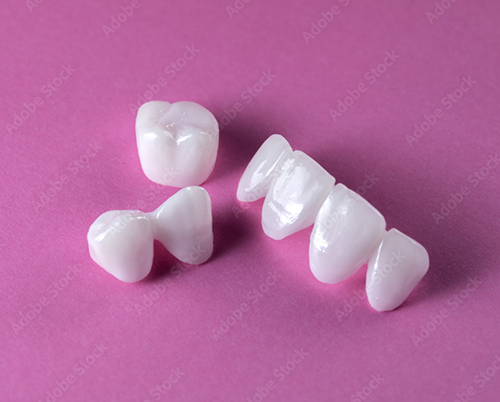Crowns and Bridges

When You Should Get a Dental Crown
Dental crowns are the best solution when you have a tooth that has been damaged. A broken or cracked tooth could be at risk. Likewise, a tooth with a large cavity or an infected tooth could become too weak to remain in your mouth.
In the cases of broken, cracked, or decayed teeth, the first step is removing the parts of the teeth that are damaged or decayed. This leaves the healthy parts of the teeth to act as a support for the dental crown. A crown be made of many different materials, including all-porcelain, porcelain fused to metal, or gold. Each situation will dictate which material is best to use but, in most instances, natural-looking porcelain is a great option. This procedure involves two steps: one where we prepare the tooth for the crown and take an impression of your mouth and one where we try in the crown and cement it in place. We work with local laboratories to fabricate our custom crowns, using only the highest-quality materials.
Bridges
If you have a single tooth missing or multiple teeth, a great option is a bridge. This is similar to the crown in procedure, but a bridge is several crowns connected together that allows us to replace missing teeth. The crowns at the ends of a bridge can fuse to existing teeth (that need to be filed down by a dental professional to fit correctly), or your dental professional can attach them to dental implants. Like crowns, bridges can be made of different materials, including gold, alloys, or porcelain. When replacing a front tooth, porcelain is most often used because it can be matched to your natural tooth color.
Dental bridges can give your mouth and smile a natural look, restore your ability to speak normally, maintain normal facial structure by preventing bone loss from the jaw, help chew food more efficiently and prevent adjacent teeth from moving into the empty space.
Thanks to the American Dental Association for this information. More information is available at Mouthhealthy.org




